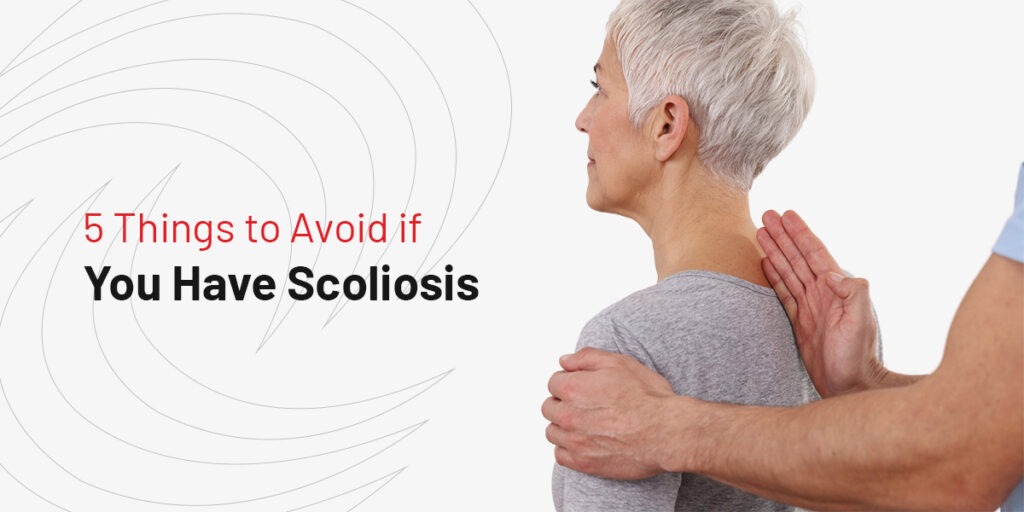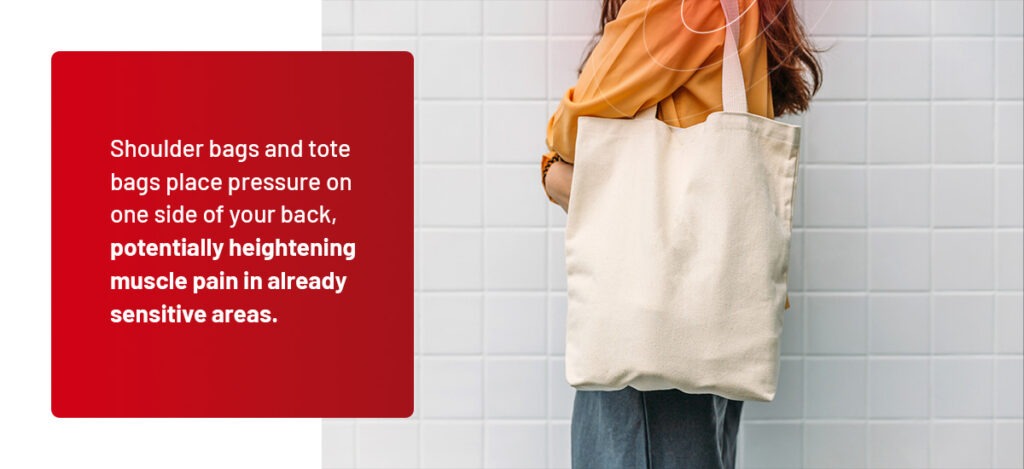
According to long-term studies, people diagnosed with scoliosis face several challenges that can significantly impact their quality of life. If you’ve been diagnosed with scoliosis or suspect your spine may have some abnormal curvature, wanting to avoid activities that worsen symptoms is perfectly logical. Certain practices can also offer relief, from wearing comfortable clothing to using ergonomic equipment at work.
This list of five science-backed guidelines explains scoliosis dos and don’ts and how to live a full life with spinal curvature.
If you have scoliosis, your spine is abnormally curved to the side, either in a C or S shape. This curvature can cause several physical symptoms, including unbalanced shoulders and/or hips, a rounded back shape, an uneven chest shape and the head being further to one side on the trunk. While some mild asymmetry is normal, spine curvature of more than 10 degrees usually indicates scoliosis.
Scoliosis affects everybody differently, as spinal curvature can range from mild to severe and take various shapes. As people with scoliosis move into adulthood, symptoms often increase as their ligaments grow weaker, particularly if they have not sought treatment. Untreated scoliosis can lead to several secondary symptoms, including:
You can minimize these symptoms by avoiding certain risky behaviors, exercising safely, doing regular physical therapy, consulting a professional orthopedic spine expert and curating your lifestyle to accommodate your spinal difference. Surgery is another effective treatment option for people struggling to manage their scoliosis symptoms.
Despite common misconceptions, people living with scoliosis can partake in almost all healthy, enriching activities they would have been able to do without abnormal spinal curvature. Of course, every person should gauge their own comfort levels, as every scoliosis case is different. If you’ve been diagnosed with scoliosis, be wary of:
While many people with scoliosis experience no complications, research shows that the more severe your scoliosis is, the more likely you are to report back pain from muscle imbalances, nerve compression, degenerative changes and overcompensation. However, pain does not need to be a defining feature of your life with a curved spine, and you deserve to feel relief. There are ways you can manage and minimize pain from scoliosis, including:
Whatever method of pain reduction you choose, it’s crucial to discuss your options and treatment plans with a specialist physician before starting any new regimen. They can help you choose the most helpful and appropriate solution for your specific needs, monitor your progress and assess the root cause of the pain, be it muscular or neuropathic.

Choose ergonomically designed footwear, clothing and accessories that best support your specific curvature. For example, you may need specialized shoes or inserts that compensate for unbalanced hips to help you walk more comfortably or flexible shirts that accommodate your back shape.
Bags should distribute weight evenly across your shoulders and hips and stay up without straining or contorting your back. High-quality padded hiking backpacks and belt bags apply symmetrical force to your frame. Shoulder bags and tote bags place pressure on one side of your back, potentially heightening muscle pain in already sensitive areas.
People with scoliosis are certainly capable of heavy lifting. However, to avoid injury and pain, it’s crucial to lift heavy objects safely and effectively if you have spinal curvature. Work with a physical or occupational therapist to find the best posture and technique for your frame.
Walking is an excellent way to exercise, increase blood flow, get fresh air and strengthen the core muscles needed to support your spine. It’s low-impact compared to sports like basketball and martial arts, which can increase injury risk. For older adults with severe scoliosis, exercises to avoid include sports with abrupt, high-impact movements and extreme heavy lifting.
Sitting in an office chair or standing at a kiosk for hours on end can strain the muscles that support your trunk, especially if you have scoliosis. To optimize pain management and help prevent further curvature from developing, take regular breaks to move, stretch, rest your muscles and adjust your posture. Some pain-relieving ergonomic additions you might benefit from at work or school include:
This depends on the specifics of your curvature, although maintaining good posture and choosing an ergonomic, adjustable chair goes a long way. When sitting on a chair for work or school, keep your feet flat on the floor for stability and even weight distribution, position your computer at eye level and move around every 30 to 45 minutes to keep circulation flowing.
One aspect of chronic illness that often goes unaddressed is the toll it takes on mental health. Living with scoliosis can feel isolating and discouraging without a proper support system, particularly because spinal curvature is often an outwardly visible condition. Feelings of “otherness” can lead to low self-esteem, anxiety and depression, and chronic pain can become overwhelming.
If you are struggling mentally with scoliosis, seek the help of a counselor, psychologist or therapist. They’ll work with you to build strategies for coping with discomfort, adjusting your self-image, interacting with others, rediscovering hope and accepting your condition with a healthy, optimistic mindset.
Many people with scoliosis live fulfilled, normal lives with minimal discomfort or restrictions. The initial diagnosis is often far more intimidating than the reality of the condition. With adequate treatment early on, a reliable support system and regular, safe exercise, people with scoliosis can accomplish their goals and pursue their passions.
DISC is a world-renowned orthopedic spine center that offers patients cutting-edge procedures with quicker recovery time and a highly customized approach to care. Our board-certified, fellowship-trained orthopedic surgeons are industry leaders in minimally invasive spine care and educate experts on innovative endoscopic techniques worldwide. They also have over 50 years of collective experience in expert patient care.
Our five United States locations see patients from across the globe for exceptional quality care and forward-thinking. We provide technologically advanced treatments, from ultra-minimally invasive spine surgery to life-changing motion-preserving artificial disc replacements on the lumbar and cervical spine. Our esteemed orthopedic spine surgeons have been featured in Phoenix Magazine’s Top Doctor segments for 15 consecutive years.
To turn your life around and find respite from chronic or acute scoliosis pain, schedule an appointment at one of our five Arizona locations. If you’ve already seen a specialist and want some clarity or peace of mind, confirm and refine your diagnosis with a virtual second opinion from DISC’s team of pioneering spine surgeons.